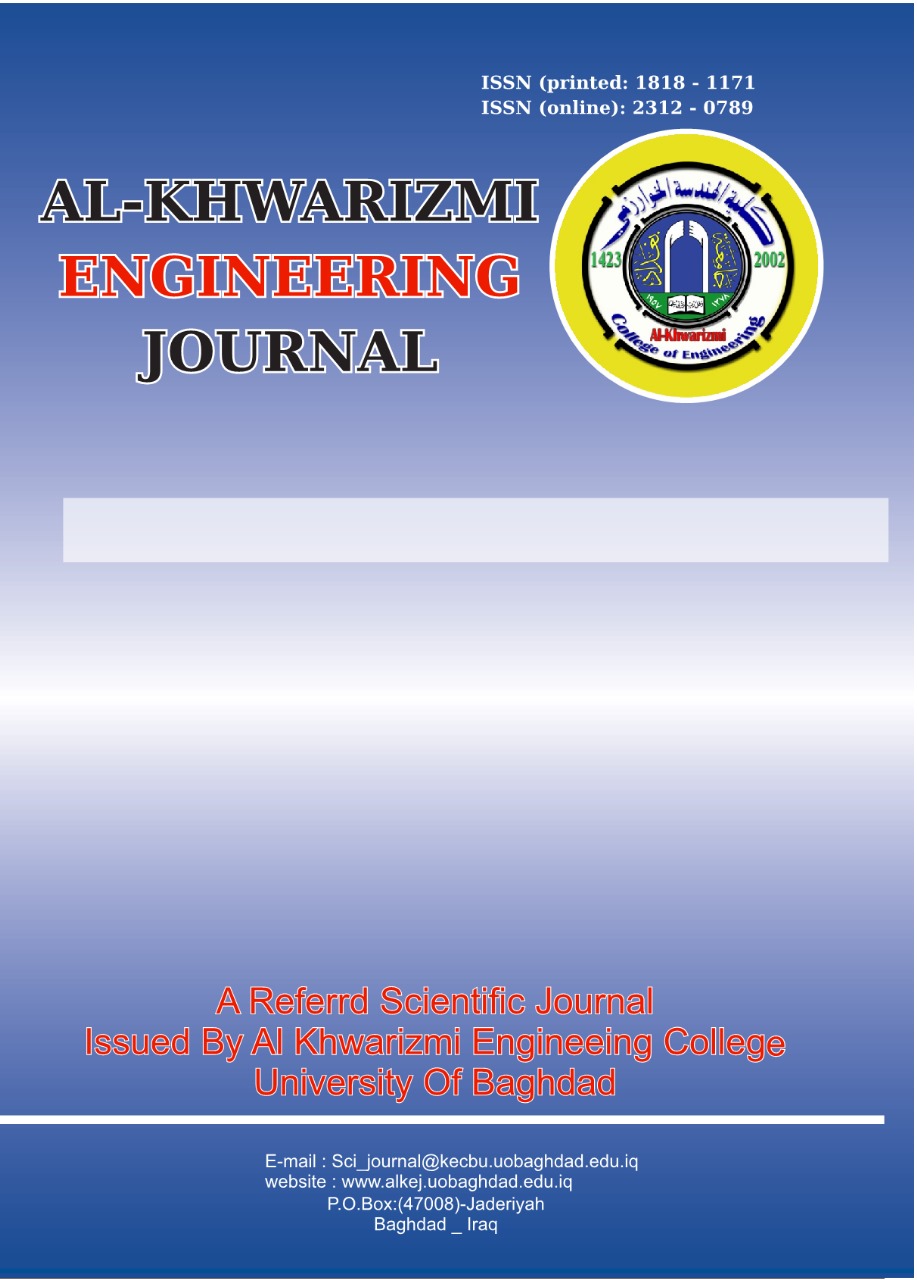Estimate and Analysis the Availability of Generator in Electric Power Plant Using ANN
DOI:
https://doi.org/10.22153/kej.2022.04.001Abstract
The large number of failure in electrical power plant leads to the sudden stopping of work. In some cases, the necessary reserve materials are not available for maintenance which leads to interrupt of power generation in the electrical power plant unit. The present study, deals with the determination of availability aspects of generator in unit 5 of Al-Dourra electric power plant. In order to evaluate this generator's availability performance, a wide range of studies have been conducted to gather accurate information at the level of detail considered suitable to achieve the availability analysis aim. The Weibull Distribution is used to perform the reliability analysis via Minitab 17, and Artificial Neural Networks (ANNs) by approaching of Feed-Forward, Back-Propagation. Operating data from the years 2015–2017 were used to calculate the availability by traditional method (Weibull distribution) and train the ANNs, while data from the year 2018 of operation were used to verify the model. The study implies that the ANN may be able to forecast the availability of the generator with a correlation coefficient (R) 0.99874 and a Mean Square Error (MSE) 5.6937E-06 between the availability predicted by ANN and Weibull distribution output.
Downloads
References
[2] Walter, Eric, and Luc Pronzato, Identification of Parametric Models from Experimental Data. Communications and Control Engineering, Springer, 1997.
[3] Zouhair Issa Ahmed, Bahaa I. Kazem, Ahmed A. R. Al-khafaji, “Availability Estimation of Caustic Pump by Using Artificial Neural Network,” The 6th Engineering Conference: College of Engineering, vol. 3: Mechanical and Nuclear Engineering, 2009.
[4] Hanumant P. Jagtap , Anand K. Bewoor , Ravinder Kumar, Mohammad Hossein Ahmadi, Mamdouh El Haj Assad, and Mohsen Sharifpur, “RAM analysis and availability optimization of thermal power plant water circulation system using PSO,” Energy Reports, vol. 7, pp. 1133-1153, 2021. https://doi.org/10.1016/j.egyr.2020.12.025
[5] Ling Wang, Haijun Hu, Yuqiao Wang, Wei Wu, and Pengfei He, “The availability model and parameters estimation method for the delay time model with imperfect maintenance at inspection,” Applied Mathematical Modelling, vol. 35, pp. 2855-2863, 2011. doi:10.1016/j.apm.2010.11.070
[6] Rajpal, P. S., K. S. Shishodia, and G. S. Sekhon, “An artificial neural network for modeling reliability, availability and maintainability of a repairable system,” Reliability Engineering & System Safety, vol. 91, no. 7, pp. 809-819, 2006. doi:10.1016/j.ress.2005.08.004
[7] M. K. Bhuyan, D. P. Mohapatra, and S. Sethi, “Software Reliability Assessment using Neural Networks of Computational Intelligence Based on Software Failure Data,” Baltic Journal of Modern Computing, vol. 4, no. 4, pp. 1016-1037, 2016. http://dx.doi.org/10.22364/bjmc.2016.4.4.26
[8] Kutyłowska Małgorzata, “Neural network approach for availability indicator prediction,” Periodica Polytechnica Civil Engineering, vol. 61, no. 4 , pp. 873-881 ,2017. https://doi.org/10.3311/PPci.10429
[9] Savsar Mehmet, “Availability analysis of a power plant by computer simulation,” International Journal of Energy and Power Engineering., vol. 9, no.4, pp. 495-498, 2015.
Downloads
Published
Issue
Section
License
Copyright: Open Access authors retain the copyrights of their papers, and all open access articles are distributed under the terms of the Creative Commons Attribution License, which permits unrestricted use, distribution, and reproduction in any medium, provided that the original work is properly cited. The use of general descriptive names, trade names, trademarks, and so forth in this publication, even if not specifically identified, does not imply that these names are not protected by the relevant laws and regulations. While the advice and information in this journal are believed to be true and accurate on the date of its going to press, neither the authors, the editors, nor the publisher can accept any legal responsibility for any errors or omissions that may be made. The publisher makes no warranty, express or implied, with respect to the material contained herein.
















